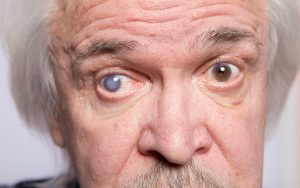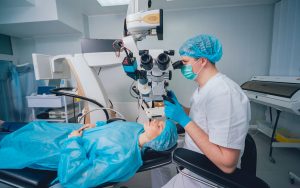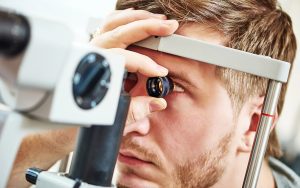What to expect during an eye examination
[/vc_column_text][vc_empty_space height=”15px”][/vc_column][/vc_row][vc_row][vc_column][vc_column_text]We are constantly bombarded with magazine articles advising us on caring for our health, skin, hair, and even our feet, but our eyes receive very little attention. That’s unfortunate, given how much we rely on our vision in our daily lives.Consider how hard your eyes work from the moment you wake up until you close them at night. That is why it is critical to look after our eyes.
Although taking care of your eyes may seem pointless if you don’t have any vision problems, adopting a few simple habits will not only preserve your vision but also reduce your chances of developing future eye problems.
What Should a patient expect during an eye examination?
Everyone should have their eyesight checked to rule out any vision or eye problems. Vision screening is usually done in school or at a health care provider’s office during a checkup for children. Adults may also receive vision screenings as part of their regular checkups. However, many adults require more than a vision examination. A comprehensive dilated eye exam is required.
Because some eye diseases have no warning signs, getting a comprehensive dilated eye exam is especially important. Medical tests are the only way to detect these diseases early on when they’re easier to treat.
Several tests are included in the exam:
- Visual Field Test: To assess your peripheral vision, take a visual field test. Glaucoma can cause a loss of peripheral vision.
- Visual Acuity: A visual acuity test involves reading an eye chart from a distance of about 20 feet to see how well you see at different distances.
- Tonometry: Tonometry is a test that determines the pressure inside your eye. It aids in the detection of glaucoma.
- Dilation: This is the process of dilating (widening) your pupils with eye drops. More light is introduced into your eyes. Using a special magnifying lens, your ophthalmologist examines your eyes. This allows you to see the retina, macula, and optic nerve, which are all important tissues in the back of your eye.
A refraction test will be performed if you have a refractive error and will require glasses or contacts. You look through a device with lenses of various strengths to help your eye care professional determine which lenses will provide you with the clearest vision.
When you should begin getting these exams and how often you should get them depends on various factors. Your age, race, and overall health are among them. If you are an African American, you are at a higher risk of glaucoma and should begin getting exams sooner. If you are battling diabetes, you should have your blood sugar checked at least once a year. Consult your doctor to see if and when these tests are necessary.
Common Eye Defects that Ophthalmologist treat
The majority of people suffer from vision problems at some point in their lives. Some of the defects are minor and will go away independently, while others are simple to treat at home. Others need the attention of a specialist.
There are things you can put in place to get your eye health back on track, whether your vision isn’t what it used to be or it never was.
Check to see if any of these common issues sound familiar to you. Always consult an Ophthalmologist if your symptoms are severe or do not improve within a few days.
1. EYE STRAIN
This one is familiar to anyone who reads for long periods, works at a computer, or drives long distances. It occurs when your eyes are overworked. They, like any other part of your body, become tired and require rest.
Allow your eyes to rest if they are strained. If they’re still tired after a few days, see your doctor to ensure it’s not something else
2. RED EYES
Your eyes appear to be bloodshot. What is the reason for this?
Blood vessels cover their surface, which expands when they become irritated or infected. Your eyes will appear red as a result of this. It can be caused by eyestrain and a late-night, a lack of sleep, or allergies. If you think it’s because of an injury, see your doctor.
Red eyes could signify another eye problem, such as conjunctivitis (pinkeye) or sun damage from years of not wearing sunglasses. Consult your doctor if over-the-counter eye drops and rest don’t help.
3. CATARACTS
Cataracts are one of the most popular types of vision problems. Cataracts are cloudy areas in the eye lens that develop over time. Light passes through a clear eye lens to your retina, where images are processed (just like a camera). When your eye lens is affected by cataracts, light cannot pass through to the retina as smoothly as it should.
As a result, you may notice a halo or glare around lights at night, and you may be unable to see as clearly as people without cataracts.
Cataract formation is usually a slow process with no obvious symptoms such as pain, tearing, or redness of the eyes. Other signs and symptoms include:
- Blurred, clouded, or dim vision
- Difficulties seeing at night
- Difficulties seeing through light and glare
- Seeing ‘halos’ around lights
- Colors being faded when viewed
- Changing contact lens prescriptions or eyeglass prescriptions regularly
New eyeglasses, anti-glare sunglasses, magnifying lenses, and brighter lighting can help in the early stages of cataracts. If not, surgery is the only effective treatment, which involves removing the cloudy lens and replacing it with an artificial one.
4. GLAUCOMA
Glaucoma is a condition in which the eye’s optic nerve is damaged and worsens over time. It usually causes a buildup of pressure in the fluid in your eye, which can damage the optic nerve, which is responsible for transmitting images to your brain.
If this increased pressure, also known as intraocular pressure, persists for a long time, it may result in permanent vision loss. Glaucoma can cause everlasting blindness in a matter of years if left untreated.
There are two types of glaucoma:
- Open-angle glaucoma: The most common type, also known as ‘wide-angle glaucoma,’ is an eye condition in which the trabecular meshwork (the eye’s drain structure) appears normal, but the fluid flow within it is abnormal. At the initial stage, there are no definite symptoms; at the later stage, you can have symptoms such as Tunnel Vision and Peripheral vision loss, gradually affecting both eyes in most cases
- Closed-angle glaucoma: This must be treated right away, or it can lead to blindness in as little as two days.
Mentioned below are some of the signs and symptoms:
- In most cases, severe eye pain is accompanied by nausea and vomiting.
- In low-light situations, a sudden visual disturbance occurs.
- Halos around light
- Vision is hazy
- Red Eyes
An experienced doctor would recommend any treatment, from eye drops to pills, traditional surgery and laser surgery, or even a merger of two or more of these methods, as long as it focuses on preventing vision loss because once eyesight is damaged due to glaucoma, vision loss is irreversible.
5. DIABETIC RETINOPATHY
Diabetic retinopathy is a diabetes complication that affects the eyes by causing damage to the blood vessels that run through the retina’s light-sensitive tissues (the back of the eye).
This eye condition can affect people with type 1 or type 2 diabetes, especially those who have had diabetes for ages and have had their blood sugar levels fluctuate. Diabetic retinopathy typically affects both eyes.
During the early stages of this eye condition, there may be no noticeable symptoms. When it gets to the later stages, the following symptoms may appear:
- Dark spots/strings floating through your vision (floaters)
- Colour recognition issues
- Fluctuating vision
- Hazy Vision
- Loss of vision
Once retinopathy has progressed to advanced stages, there is no reliable way to cure it. However, if chosen before the retina is severely damaged, photocoagulation (laser treatment for retinopathy) can help prevent vision loss.
Vitrectomy, a process in which the vitreous gel is surgically removed while the retina is not severely damaged, is another treatment option for diabetic retinopathy in its early stages.
How do I keep my eyes healthy?
There are some things you can do to keep your eyes healthy and ensure that you see clearly. They include the following:
1. EAT GOOD FOOD
The food you take has a big impact on your eye health. Omega-3 fatty acids, lutein, zinc, and vitamins C and E may help protect against macular degeneration and cataracts as people get older. Fill your plate with the following to get them:
- Take green leafy vegetables such as kale, spinach, and collards
- Eat Tuna, salmon, and other oily fish
- Consume eggs, nuts, beans, and other nonmeat protein sources
- Oranges, lemons, limes, citrus fruits in general, and juices
- Eat pork and oysters
2. EXERCISE REGULARLY
Diabetes, high blood pressure, and high cholesterol can all be prevented or controlled by exercise. These illnesses can cause vision and eye issues. So, if you exercise frequently, you can reduce your chances of developing these vision and eye problems.
A well-balanced diet also aids in weight maintenance. Obesity and related diseases such as type 2 diabetes, which is the leading cause of blindness in adults, are reduced as a result.
3. REDUCE YOUR EXPOSURE TO DIGITAL SCREENS
Every day, most people spend hours on digital devices such as cell phones, tablets, and laptops. These devices emit high-intensity blue light waves that can cause long-term damage to your eyes. Supplementing with lutein and zeaxanthin can help your eyes filter blue light.
It will also help if you keep your computer screen 20 to 24 inches away from your eyes and adjust the lighting to reduce glare. It’s important to make a conscious effort to blink frequently when looking at screens because we blink less when looking at them. Finally, every 20 minutes, rest your eyes by focusing on an object 20 feet away for 20 seconds.
4. WEAR SUNGLASSES
Your eyes will be protected from the sun’s ultraviolet (UV) rays if you wear the right sunglasses. Excessive UV exposure increases the risk of cataracts and macular degeneration.
Choose a pair that blocks UVA and UVB rays by 99% to 100%. Wraparound lenses provide side protection for your eyes. While polarized lenses reduce glare while driving, they do not always provide additional protection.
Some contact lenses provide UV protection if you wear them. Wearing sunglasses as an extra layer is still a good idea.
5. STEER CLEAR OF SMOKING
Smoking raises the risk of age-related eye diseases like macular degeneration and cataracts, as well as causing optic nerve damage.
Eyes are among the most complex and sensitive body parts necessitating special attention to ensure that they last long enough for you to live a healthy, vibrant and colorful life.
In addition to taking personal care of them, keep an eye out for troubling signs and symptoms, and you should consult an eye doctor as soon as possible so that your eye can receive professional care and treatment before it’s too late[/vc_column_text][/vc_column][/vc_row]




